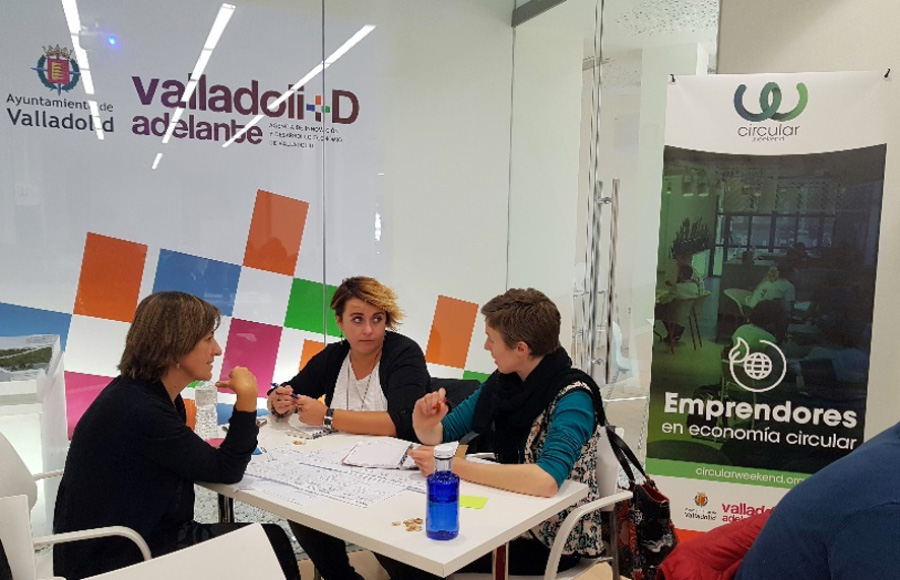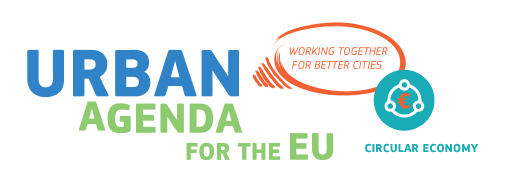Circular economy indicators
Programme owners need circular indicators to understand the scope and impact of the circular economy projects they are funding. Selecting the right indicators may be challenging since projects are diverse, performance data is scarce or difficult to measure, and consensus on appropriate indicators is often lacking. Experiences from frontrunners show that flexibility is needed and that it is important to have dialogues with project promotors on proper indicators.
In order to structure such a dialogue, programme owners can consult existing overviews of generic sustainability criteria (such as ESG-criteria) and select circular economy indicators that match the project’s scope and desired impact.
Environmental, social and governance criteria (ESG)
As it can be difficult to define indicators specific to circularity, it is advisable to look at more general sustainability criteria first, and consider how these are used to measure sustainability. Programme owners can then decide which indicators they want to include.
A good start is to consider the Environmental, Social, and Governance (ESG ![]() ) criteria, which are often used in the financial sector to measure the sustainability of projects and organisations.
) criteria, which are often used in the financial sector to measure the sustainability of projects and organisations.
How can the ESG criteria be used?
- Environmental criteria: these criteria can be used by programme owners to measure a project’s impact on the environment. Based on this, the owner can decide whether to invest in the project or not. Here are some examples:
- Does the project contribute to national and international objectives to counter climate change, for example by reducing greenhouse gas emissions?
- Does the project reduce adverse impacts on the environment?
- Does the project increase resource and/or energy efficiency?
- Social criteria: these criteria can be used by programme owners to analyse how the project considers and values people and what impact it has on society. Here are some examples:
- Does the project support a diverse and inclusive society?
- What efforts are made to guarantee safe and healthy working conditions?
- Does the project contribute to the local community by investing in infrastructure / services for public benefit?
- Governance criteria: these criteria can be used to judge how the project is governed. Stakeholders’ expectations, responsibilities and rights should be clear in order to meet interests and achieve consensus on an (ambitious) strategy for the project. Here are some examples:
- Does the project comply with relevant labour legislation? Does it ensure that workers’ rights are considered and protected?
- Are the decision-making processes and legal documents of the project suitable, robust and supportive for the rights of shareholders? Is there sufficient justification, favourable reimbursements and guarantees in project documentation?
- Is there a proper tax compliance strategy? Are lawsuits ongoing or pending?
- Are measures in place to prevent corruption or other illicit practices?
Specific circular economy indicators
To identify suitable circular indicators that specifically match the expected and desired impacts, programme owners can use existing overviews of circular indicators from which they can draw their own indicator list. Three circular indicator overviews are provided below.
- A comprehensive overview of circular economy indicators that are currently used by a range of cities and organisations has been compiled by the Urban Agenda Partnership for Circular Economy
 . The partnership has also suggested additional indicators that could fill the gaps identified in the indicators that are currently in use. The list of indicators covers topics such as consumption, raw materials usage, water usage, green public procurement, waste generation, recycling, material recovery, environmental education, and food waste. You can read more on this comprehensive overview of circular economy indicators in this report (p. 23-28)
. The partnership has also suggested additional indicators that could fill the gaps identified in the indicators that are currently in use. The list of indicators covers topics such as consumption, raw materials usage, water usage, green public procurement, waste generation, recycling, material recovery, environmental education, and food waste. You can read more on this comprehensive overview of circular economy indicators in this report (p. 23-28) 
- The World Business Council for Sustainable Development (WBCSD)
 has created a framework of indicators
has created a framework of indicators  to help organisations in their transition towards a circular economy. The indicators are divided into three stages of circularity:
to help organisations in their transition towards a circular economy. The indicators are divided into three stages of circularity:
- Closing the loop: these indicators can be used to measure circular material inflows and outflows, recovery potential and actual recovery;
- Optimising the loop: these indicators can be used to measure inflows that are considered critical or scarce;
- Valuing the loop: these indicators can be used to measure the macro-economic value of an organisation’s circular material flows.
In addition, the document presents a step-by-step approach which focuses on determining boundaries, selecting indicators, collecting data, calculating and interpreting results, and developing and applying an action plan. The WBC framework also includes formulas that can be used to calculate these indicators and examples from different sectors. The document is still work in progress, which means that indicators might be added or updated.
- The OECD Circular Cities and Regions programme
 is currently developing a set of tools that can be used by programme owners. The tools include input, process, and output indicators related to the circular economy for both economic and social aspects. Their Circular Economy Brochure
is currently developing a set of tools that can be used by programme owners. The tools include input, process, and output indicators related to the circular economy for both economic and social aspects. Their Circular Economy Brochure  presents their preliminary observations and can inspire the development of circular indicators.
presents their preliminary observations and can inspire the development of circular indicators. - The Ellen MacArthur Foundation
 has developed Circulytics
has developed Circulytics  . This is a comprehensive company-level circularity measuring tool. It reveals the extent to which a company has achieved circularity, focussing on the entire company, not just products and material flows. In addition, the tool shows circular strengths and highlights areas for improvement. Companies can fill in this free tool themselves by signing up on the website
. This is a comprehensive company-level circularity measuring tool. It reveals the extent to which a company has achieved circularity, focussing on the entire company, not just products and material flows. In addition, the tool shows circular strengths and highlights areas for improvement. Companies can fill in this free tool themselves by signing up on the website  .
.
- Another tool developed by the Ellen MacArthur Foundation
 is the Material circularity indicator
is the Material circularity indicator  . This allows companies to identify additional, circular value from their products and materials. The tool measures how restorative the material flows of a product are. It can be used by product designs, for internal reporting, procurement decisions and the evaluation or rating of companies.
. This allows companies to identify additional, circular value from their products and materials. The tool measures how restorative the material flows of a product are. It can be used by product designs, for internal reporting, procurement decisions and the evaluation or rating of companies.






